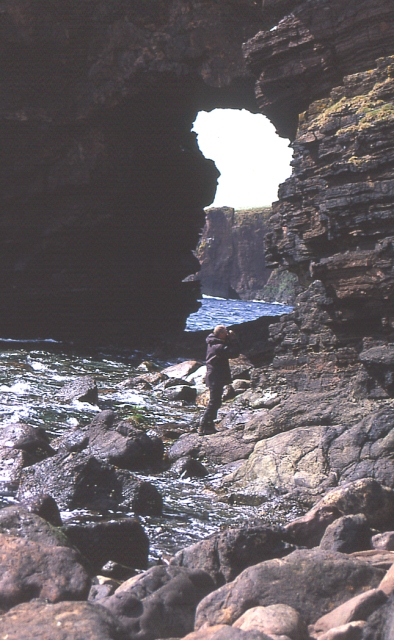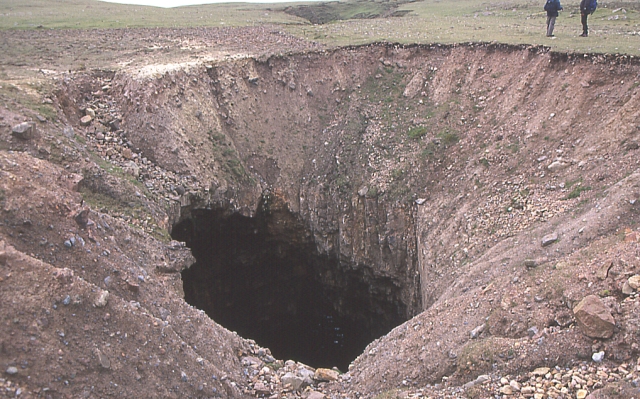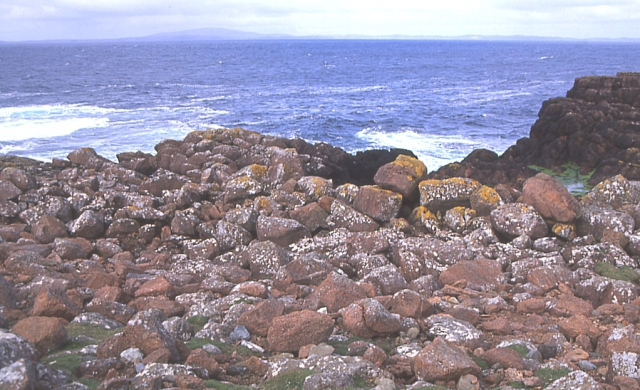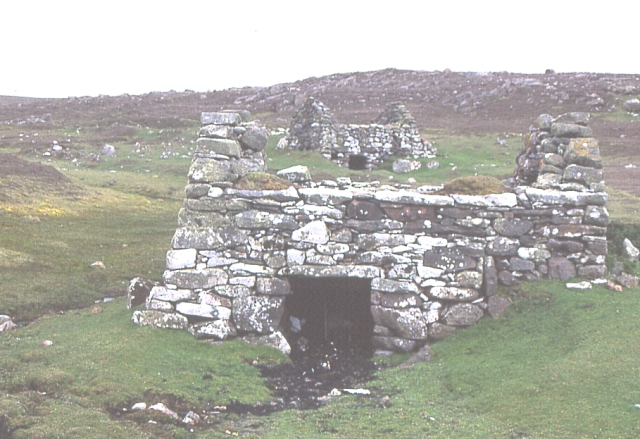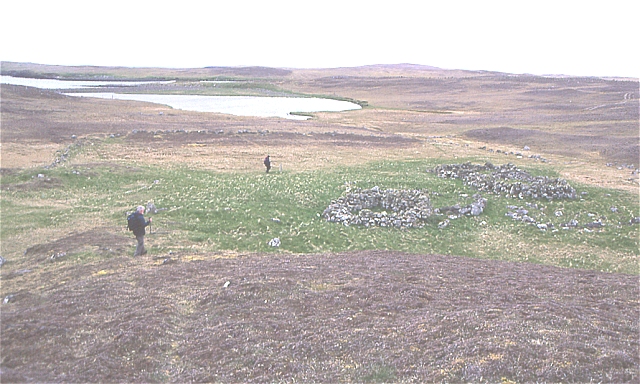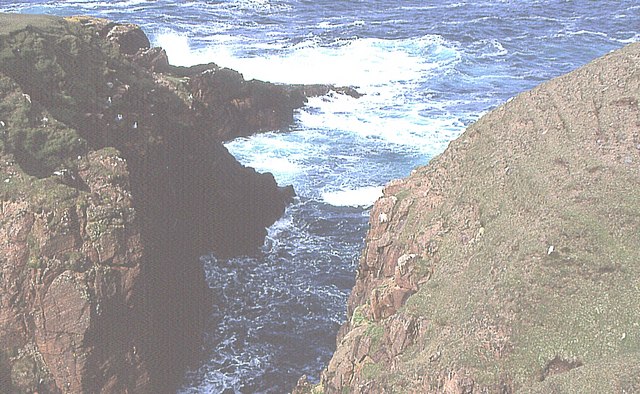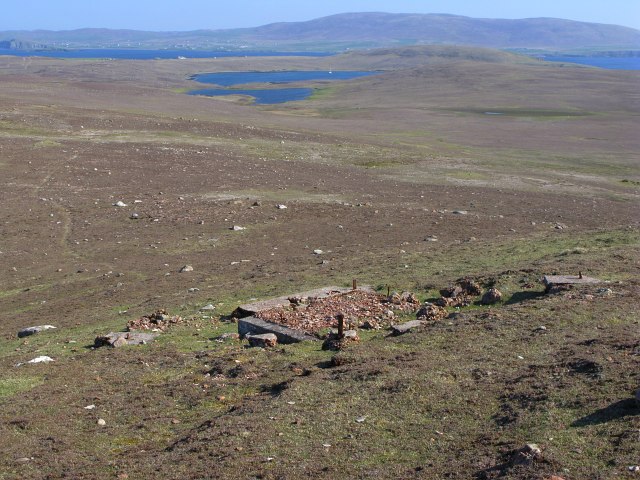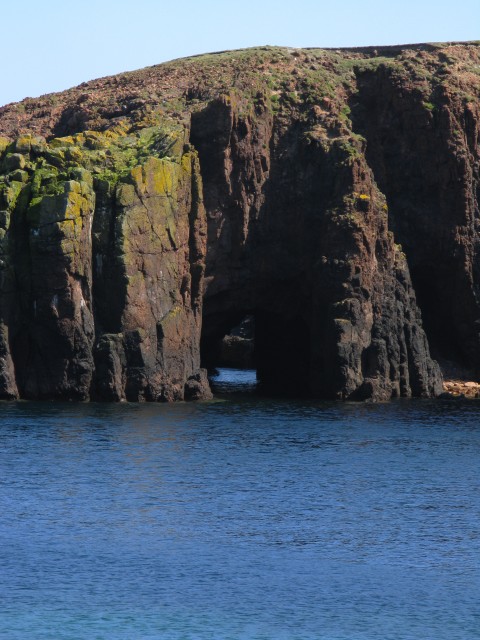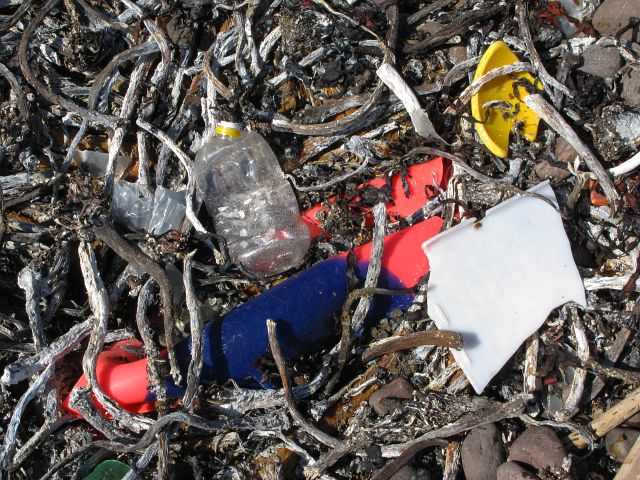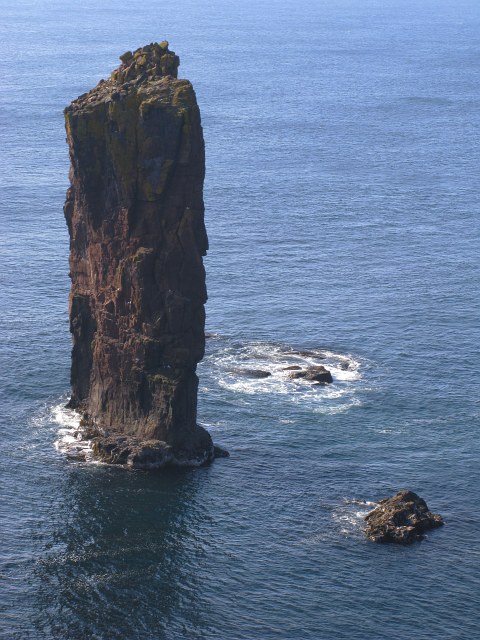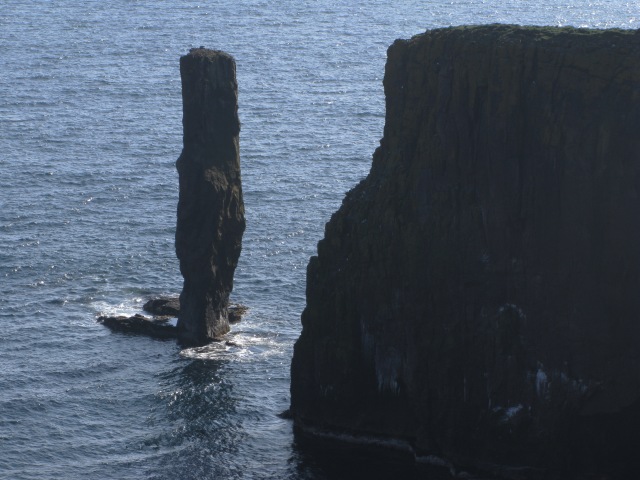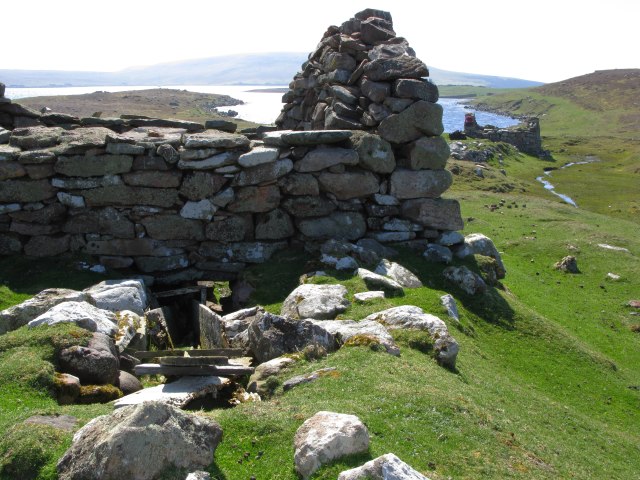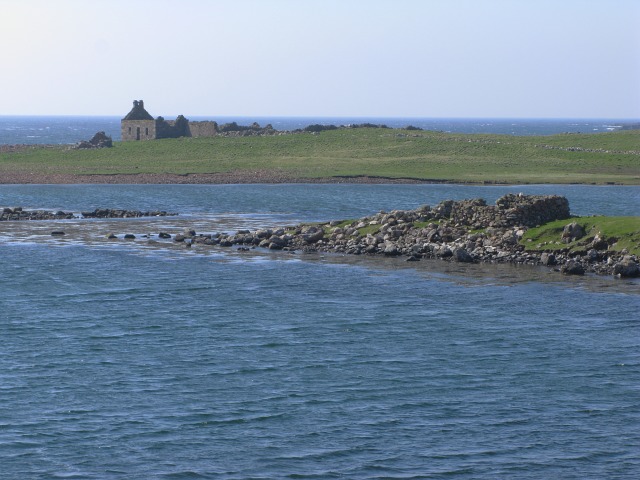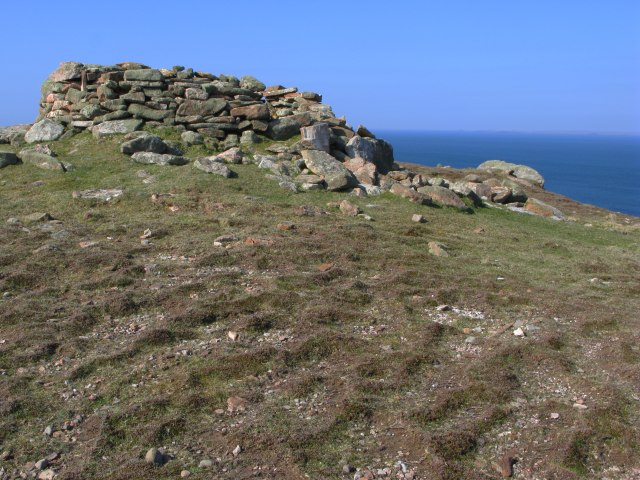Shaaberg's
Coastal Feature, Headland, Point in Shetland
Scotland
Shaaberg's
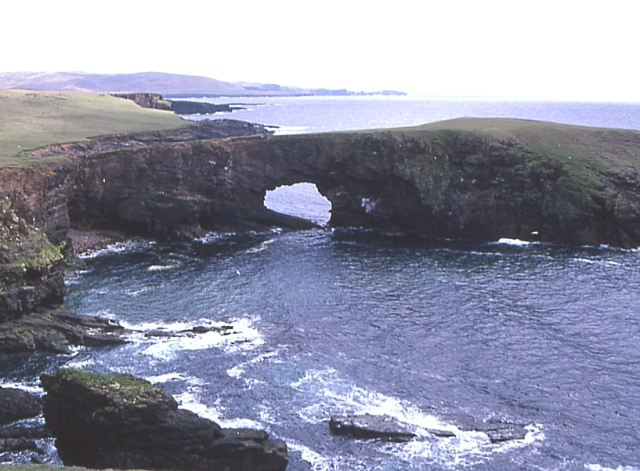
Shaaberg's is a prominent coastal feature located in Shetland, an archipelago in Scotland. It is specifically classified as a headland, extending out into the North Sea. This rocky point is situated on the western coast of the Shetland mainland, near the village of Sandness.
The name Shaaberg's is believed to have Norse origins, reflecting the historical influence of Viking settlers in the region. The headland is characterized by its rugged terrain and steep cliffs, which rise dramatically from the sea. These cliffs are composed of layered sedimentary rocks, showcasing the geological history of the area.
Shaaberg's offers stunning panoramic views of the surrounding coastline and the open sea. Its elevated position provides an ideal vantage point for observing the diverse marine life and seabird colonies that thrive in the area. Visitors often spot a variety of seabirds, including puffins, guillemots, and gannets, soaring above the waves or nesting on the cliff ledges.
The headland is also known for its rich cultural heritage. It has been a site of human activity for centuries, with archaeological evidence suggesting ancient settlements in the vicinity. Ruins of old buildings and structures can still be found, hinting at the area's historical significance.
Shaaberg's attracts nature enthusiasts, hikers, and photographers who are captivated by its natural beauty and dramatic landscapes. The coastal feature offers a sense of serenity and tranquility, allowing visitors to escape the hustle and bustle of modern life and immerse themselves in the wild beauty of Shetland's coastline.
If you have any feedback on the listing, please let us know in the comments section below.
Shaaberg's Images
Images are sourced within 2km of 60.344144/-1.71279 or Grid Reference HU1562. Thanks to Geograph Open Source API. All images are credited.
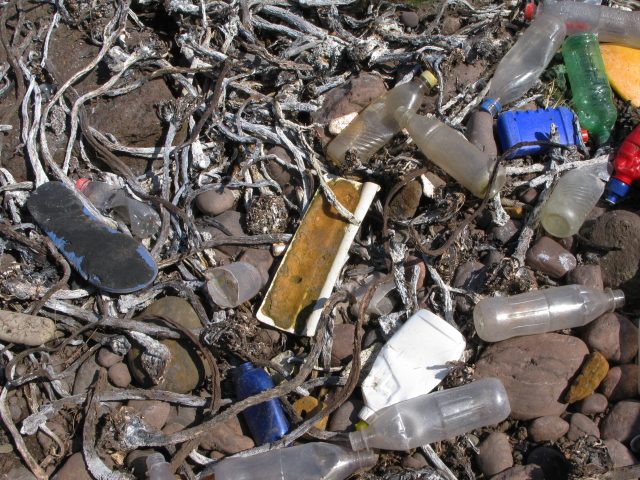
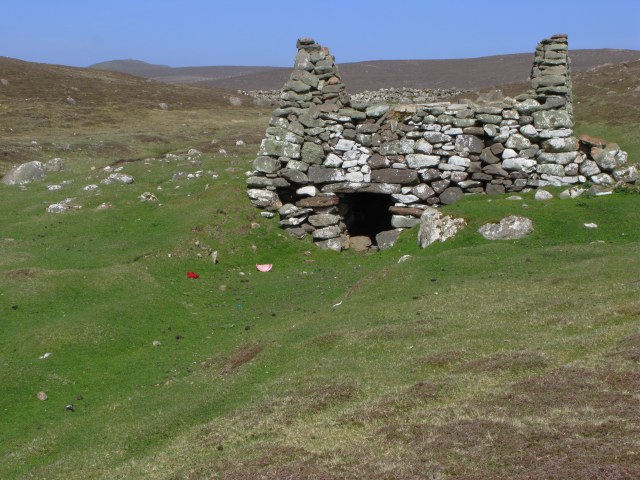

Shaaberg's is located at Grid Ref: HU1562 (Lat: 60.344144, Lng: -1.71279)
Unitary Authority: Shetland Islands
Police Authority: Highlands and Islands
What 3 Words
///taps.train.twitches. Near Walls, Shetland Islands
Nearby Locations
Related Wikis
Papa Stour
Papa Stour (Scots: Papa Stour) is one of the Shetland Islands in Scotland, with a population of under fifteen people, some of whom immigrated after an...
Biggings
Biggings is a village on the island of Papa Stour, in Shetland, Scotland. Papa Stour's church is situated at the south of Biggings. A homestead of Duke...
Papa Stour Airstrip
Papa Stour Airstrip is a small airstrip in the village of Biggings on the island of Papa Stour. Shetland, Scotland. == History == Papa Stour Airstrip opened...
Maiden Stack
The Maiden Stack or Frau Stack is a tiny stack in the western Shetland Islands to the north of Brei Holm and east of Housa Voe in Papa Stour. It is so...
Have you been to Shaaberg's?
Leave your review of Shaaberg's below (or comments, questions and feedback).
